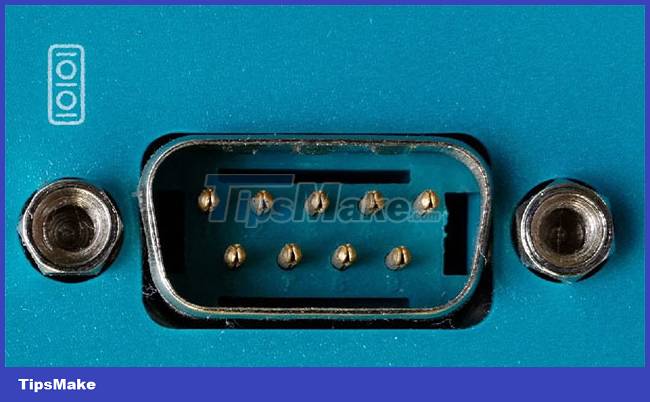Why do some modern computers still have Serial ports?
Some of the most common peripherals are mice, keyboards, monitors or display devices, printers, speakers, flash drives, etc.
In computers, communication ports can be divided into two types based on the type or protocol used to connect. They are Serial Port and Parallel Port. While the Parallel Port port has become obsolete and almost no longer appears on modern PC systems, the Serial Port still exists and is present on a number of new computer models. So what is the reason why Serial ports are trusted by PC users for so long?
What is Serial Port?
Serial Port is an interface through which peripheral devices can be connected using a serial protocol that involves the transmission of data one bit at a time over a transmission line. only. The most common type of serial port is a D-Subminiature or a D-sub connector that carries RS-232 signals. Modern serial ports tend to be 9-pin versions, the shape and size of the port is very similar to the VGA port (almost obsolete).
Regardless of how many pins a serial port has, the basic method of transmitting data will still be bit by bit in series, which is what the name 'serial port' means. Different pins on the serial port can have different functions, such as sending control signals or monitoring data from your connected device.
Serial ports have a standard signal transfer rate of 115.2Kbps. At such speeds, it will take you almost a day to transfer 1GB of data! That's under ideal circumstances, and things can be much, much slower than that.

Why is the Serial port still in use?
If serial ports are so slow and relatively cumbersome, why do some modern computers these days still own them? There are a few reasons, but the most important ones include:
- A lot of scientific and industrial devices are still using serial ports to communicate.
- Serial port is simple, stable, well understood and much cheaper to implement than other modern port types.
- Some jobs are specialized, such as programming microcontrollers.
- Serial ports can be easier to debug.
We are talking about simple binary control signals or plain text characters. As the higher speed of more complex interfaces will be wasted in these use cases. Once there, the reliability and simplicity of serial ports becomes a much more valuable feature.
Motherboard with Serial . port
Although Serial ports are still present on PCs today, ordinary computer users rarely use them. So in fact, you might have a hard time finding any modern motherboards that have a 9-pin serial port as part of the I/O (Input/Output) ports on the back of the board. motherboard.
However, that does not mean that the motherboard does not have a Serial interface. You will have to refer to your motherboard's detailed manual to make sure the serial port is supported.
USB to Serial converter
If you're on a laptop, don't have a motherboard with the right headers, or don't want to mess up the inside of your computer, another great solution is to use a USB Serial Adapter. As the name suggests, this converts the USB signal to an RS 232C serial port signal.
This will allow you to connect to any peripheral that uses the serial port and you to communicate with devices that accept this port signal, using the right software of course!
You should read it
- Summary of some simple ways to disable USB ports on Windows computers
- What is AAA PC Port? Why do they have so many problems?
- What is the Uplink port on a computer network?
- How to change LPT port in CMOS
- Is the WAN port of the router connected to the computer?
- What is DVI port? Classification of popular DVI ports today
 AMD confirms Radeon GPU driver update can damage Windows setup, users note
AMD confirms Radeon GPU driver update can damage Windows setup, users note Difference between Nvidia GeForce RTX 3060 and 3060 Ti
Difference between Nvidia GeForce RTX 3060 and 3060 Ti What is the most powerful single-board computer (SBC) today?
What is the most powerful single-board computer (SBC) today? 6 best AMD motherboards for gaming
6 best AMD motherboards for gaming Homemade world's largest laptop, 43 inch screen
Homemade world's largest laptop, 43 inch screen 4 How to check Windows 11 computer configuration with commands and software
4 How to check Windows 11 computer configuration with commands and software